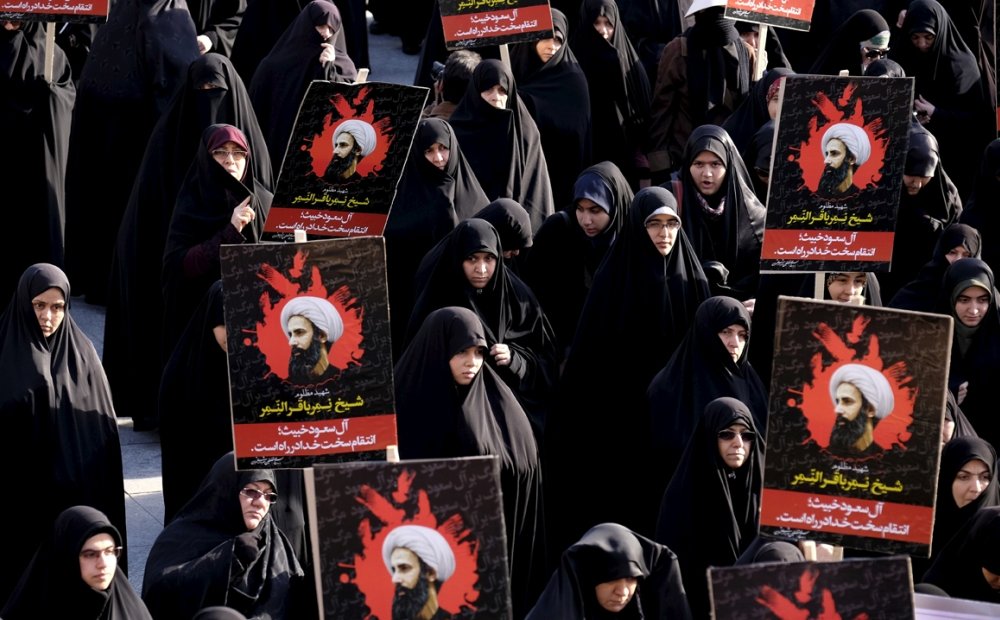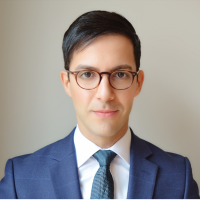The Iranian-Saudi Crisis: Implications for 2016 and Beyond

Key Quotes:
David Ottaway:
- The final straw (in the Saudi-Iranian relationship in the past) was the sacking of the Saudi Embassy in Tehran in 1988. This led to a cut in diplomatic relations for three years.
- This conflict has been going on since the birth of Hezbollah in Lebanon in 1982. It has had a long history since the Iranian Islamic revolution in 1979. It has gotten worse since the Arab Spring when the Saudis went out on a limb for the first time calling for the overthrow of Syrian President Bashar Al-Assad.
- The Saudi’s relationship with the Obama Administration has been pretty bitter. They have watched Obama open this relationship with Iran both secretly and publically. They have seen the US does not support their war in Yemen. They have seen the US does not support their war in Yemen. They feel American backing for SA is slipping away and that this administration is developing a pronounced tilt toward Iran, even looking to the Iranians to help solve the situation in Syria. This bothers them a lot.
- I worry there is going to be an accident – things are very tense out there (in the Persian Gulf ). A possible accident on the ground is my major concern.
Ali Vaez:
- There are some similarities between this attack and the 2011 storming of the British embassy. Both were condemned by government. Both incidents had some popular support.
- Rouhani and Zarif would like to build on the momentum of the nuclear deal and further the relationship with the United States, but Supreme Leader Khamenei and others are still skeptical.
- It’s true that the United States and Saudi Arabia have a strategic relationship, but at the tactical level there have been more agreements between Tehran and Washington than Washington and Riyadh.
- Saudi fears the rapprochement between the United States and Iran has already happened.
- If you live in this region and are familiar with the conspiracy theories, that everything the US has done since 2003… has been done in the interest of Iran.
Robin Wright:
- Part of the tension is over which country is seen by the United States as more important.
- Saudi Arabia is particularly worried by the nuclear deal and the end of Iran’s pariah status that there will be a shift toward Iran.
- The danger is of course even if all sides attend Syrian peace talks, there is a lack of trust because of what happened between the two sides… that there will be a diplomatic process that plays out on paper but doesn’t translate into action.
- The (Persian) Gulf has potential for more conflict and provocation.
- The Saudis knew what kind of reaction it (the execution of al-Nimr) would provoke from emotional Shi’ites… his goal was not regime change… it was to get greater rights for 10-15% of the population (of Saudi Arabia) that is Shi’ite.
- Both Iran and Saudi Arabia are facing political transitions. In Iran, a successfully brokered nuclear deal stands to boost moderate politicians in February parliamentary elections. In Saudi Arabia, a young Deputy Crown Prince is ushering in a more unilateral and aggressive policy agenda.
- While the Arab Spring spurred Saudi Arabia to counter Iranian influence in Bahrain, Syria, and Yemen, the recently signed nuclear deal has exacerbated the Kingdom’s fears and pushed it to new levels of unilateral action.
- While global powers have so far succeeded in bringing Saudi Arabia and Iran to the same negotiating table, this peace if fragile. Domestic spats, such as an execution or the ransacking of an embassy, have potential to destabilize global initiatives.
After nearly two years of negotiations, the U.S., Iran, and other members of the P5+1 are on the verge of implementing their historic nuclear accord. However, perhaps paradoxically, rather than usher in new stability and cooperation, this agreement is seemingly ensured to add yet another layer of complexity to the geopolitical struggle between Iran and Saudi Arabia.
While relations between Iran and Saudi Arabia have long been mired in religious, ethnic, and political tensions, dating back to at least 1979, Dr. Ottaway believes that it was only recently, with the Arab Spring, that Saudi Arabia was pushed to an “unprecedented” level of regional “activism.” In 2011, the Kingdom sent national guardsmen to Bahrain in order to secure the Sunni-minority monarchy, while also engaging early on in Yemen and Syria. In Dr. Ottaway’s opinion, these moves were done both to appease its domestic Sunni base and to also counter what was already seen in Saudi Arabia as an Iranian incursion into the Kingdom’s sphere of influence. However, now that Iran has begun to normalize relationships with the West, Dr. Ottaway believes that a feeling of abandonment has “propelled the Saudis into a new aggressiveness and show of force” throughout the region. As the U.S. continues to normalize ties with Iran, he fears that Saudi Arabia will feel the need to further demonstrate its unilateral capabilities and assert itself regionally.
Conversely, Dr. Vaez believes Iran is shifting away from the hardline, conservative policies that have long guided the country. In his opinion, the January 2 protest in front of the Saud Arabian embassy in Tehran and the government’s subsequent reaction, are indicative of the Iran’s changing political reality. While hardline elements in the government must have ultimately condoned the protest against Sheikh Nimr al Nimr’s execution, there was a clear intent to contain the fallout; senior officials and protesters were held accountable when the demonstration turned violent, and Iranian officials were almost unanimous in condemning their actions. As Iran reemerges onto the global stage, Dr. Vaez believes that officials are worried that such instances can hurt the country in a “war of images.” Instead, he believes Iranian leaders are hoping to win “the war of words,” by demonstrating a new openness to diplomacy and cooperation with Western partners – particularly the U.S. – on shared regional interests, such as stabilizing Syria, Iraq, and Afghanistan.
With Iran’s reemergence from under sanctions, Ms. Wright worries that the question of “which [country] is seen as more important to the U.S.” is becoming a focal point for both Saudi Arabia and Iran. Further, as both countries tacitly try to one-up the other, she worries that their competition could destabilize larger, global initiatives. Syrian peace talks – slated to begin January 25 – are just one such instance where Ms. Wright believes that diplomatic initiatives, which “play out on paper,” may be derailed by a lack of trust or domestic fallout between Iran and Saudi leaders. While U.S. analysts like to theorize about how the nuclear accord may shape the future balance of power in the Middle East, Ms. Wright argues that the accord has already forced the leading regional powers to adjust their strategies and posturing. In her opinion, the U.S. must recognize this new reality, check the balance of power before competition erupts, and “prevent the Middle East from disintegrating.”
Speakers


Former Washington Post Middle East Correspondent



Hosted By

Middle East Program
The Wilson Center’s Middle East Program serves as a crucial resource for the policymaking community and beyond, providing analyses and research that helps inform US foreign policymaking, stimulates public debate, and expands knowledge about issues in the wider Middle East and North Africa (MENA) region. Read more
